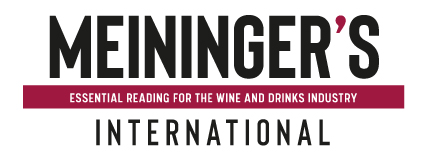- UK excise duty will now rise in February 23, contrary to previous government policy
- The amount of the increase is not yet clear but traditionally it was in line with the 'Retail Price Index' inflation - currently over 12%
- The UK also plans to introduce a highly complex, multi-tier system in which duty rises in line with alcoholic strength - ABV
- All wines with ABV of over 11.5% will become proportionally more expensive
- Wine with an ABV of 13.5% might be subject to nearly a dollar more duty and tax than at present
On September 23rd, the then recently-appointed UK finance minister Kwasi Kwarteng, delighted members of the British wines, spirits and beer trades by announcing in a 'mini budget' that he would be freezing the rise in excise duty that was scheduled for February 2023.
Traditionally, duty rates are raised to keep them aligned with the Retail Price Index (RPI) which is currently 12.3% “At this difficult time”, Kwarteng said “we are not going to let alcohol duty rates rise in line with RPI… the planned increases in the duty rates for beer, for cider, for wine, and for spirits will all be cancelled.” The drinks professionals were also happy to know that the ‘Alcohol Duty Review’ (ADR), a highly complex, multi-tier set of ABV-linked excise rates devised by Kwarteng’s predecessor Rishi Sunak, would be at least postponed and hopefully simplified or dropped.
Unfortunately their enthusiasm for the mini budget was not shared by the international money markets when they saw the full list of unfunded tax cuts Kwarteng put forward that day. The pound plummeted, costs of government borrowing soared, the Bank of England had to apply emergency measures and, three weeks after announcing measures that were the central plank of prime minister Liz Truss’s ‘’Trussonomics’, Kwarteng was fired.
Reversal of the reversed increase of duty rates...
On October 17th, in an effort to balance the books, his hastily-appointed successor, Jeremy Hunt reversed almost all of Truss’s and Kwarteng’s budgetary plans, including the excise duty freeze, announcing that “Not proceeding with [it] is worth approximately £600 million a year”.
Ominously for a UK drinks trade that had almost unanimously thought the ADR unworkable, Hunt went on to say that “The next steps of [it would] continue as planned and the wider reforms to alcohol duties… considered in due course.” Miles Beale, chief executive of the Wine and Spirit Trade Association who had argued vigorously against the reforms, called the announcement “extremely disappointing”.
Optimistic UK industry observers are hoping that Hunt will decide to raise duty rates by less than RPI and that the reforms due next August will be simplified or delayed. The current worst-case scenario, however, is that the combination of duty and 20% VAT sales tax will raise the retail price of a bottle of wine in February by at least £0.38 ($0.42). Given the fall in the value of the pound, in order to sell 75cl UK-bottled wine at £6 ($6.86), a retailer making a normal margin would need to buy it for $1.30/€1.30 or less.
Pessimists, however, see an even bleaker future, reasonably fearing that, whatever the rise in duty levels in February 2023, that figure will be the rate set for wine at 11.5% ABV.
Further tax increases on the horizon?
Under the ADR, which might be implemented the following year, wines with higher strengths would be subject to proportionally higher rates.
So, assuming duty rose by the current 12% RPI in February 2023, if ADR were subsequently applied, a wine with an ABV of 13.5% would be subject to combined excise duty and sales tax of £3.53 ($3.99) compared to the current rate of £2.68 ($3.02).
And of course, the rates in 2024 and 2025 might be even higher.
The only hope for the UK wine trade is that Miles Beale and the WSTA are able to persuade the government to drop or drastically simplify the ADR, or to appreciate that continually increasing duty levels will ultimately lead to a decrease in revenue.
Given the fact that Britain has already had four different finance ministers in the last five months, and may have a fifth once it has chosen its third prime minister this year, it is far from clear precisely who will need to be convinced.
This article was revised on 18 and 21st October to accommodate additional information


These charts illustrate how UK duty rates could rise, if the tradition of increasing them in line with retail prices (plus 12%) and the ADR model, linked to alcoholic strength were both applied.






